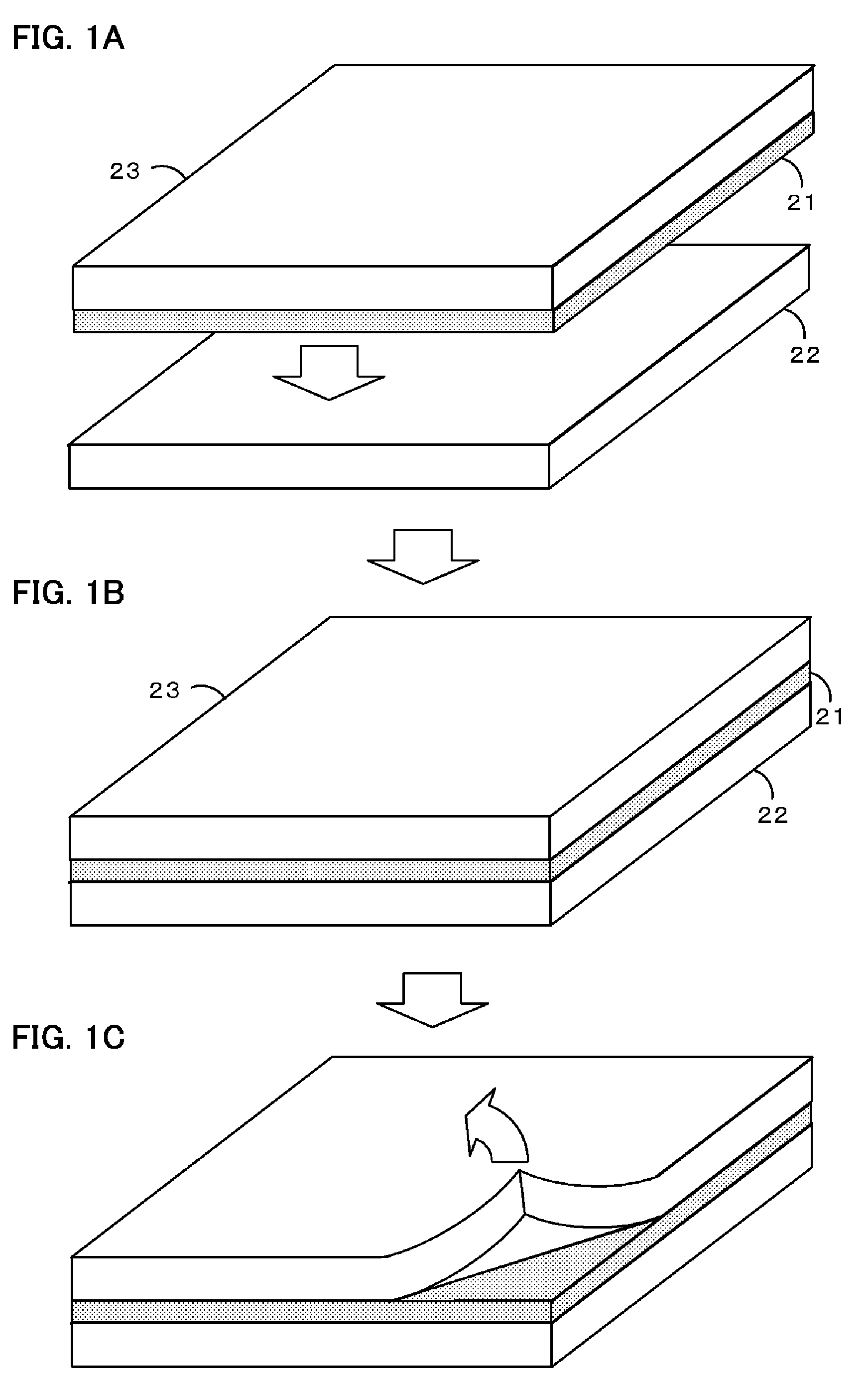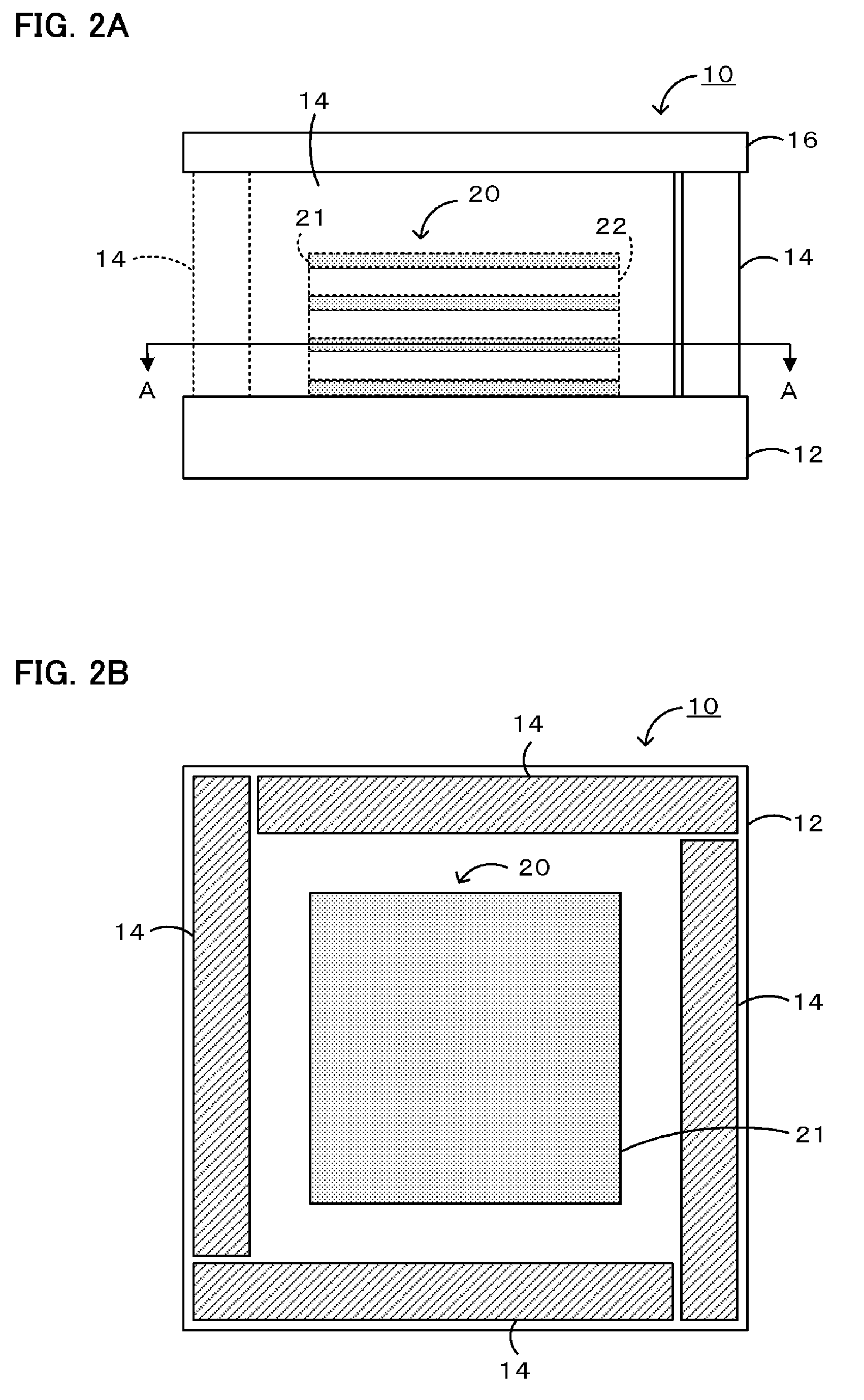Method for producing crystallographically-oriented ceramic
a technology of crystallographic orientation and crystallographic orientation, which is applied in the direction of crystal growth process, gel state, electrical apparatus, etc., can solve the problems of cumbersome processing and enhance crystallographic orientation, and achieve the effect of simple processing and enhanced crystallographic orientation
- Summary
- Abstract
- Description
- Claims
- Application Information
AI Technical Summary
Benefits of technology
Problems solved by technology
Method used
Image
Examples
example 1
(Preparation Step of Preparing Inorganic Materials)
[0037]Powders (Li2CO3, Na2CO3, K2CO3, Nb2O5, and Ta2O5) were weighed so that a first inorganic material was composed of Li0.03(Na0.475K0.475)1.03NbO3.015 (an oxide represented by general formula ABO3 which is A-site rich) and a second inorganic material was composed of Li0.03(Na0.475K0.475)0.98Nb0.7Ta0.3O2.999 (A-site poor). With respect to each of the first and second inorganic materials, the weighed powders, zirconia balls, and ethanol as a dispersion medium were placed in a plastic pot, and wet mixing and pulverization were performed using a ball mill for 16 hours. The resulting slurry was dried using an evaporator and a dryer, and then calcination was performed at 850° C. for 5 hours. The calcined powder, zirconia balls, and ethanol as a dispersion medium were subjected to wet pulverization using a ball mill for 5 hours, followed by drying using an evaporator and a dryer. Thereby, inorganic material powders composed of Li0.03(Na...
example 2
[0041]A crystallographically-oriented ceramic 40 was produced as in Example 1 except that, in the shaping step, through-holes 24 of 50 μm were formed by punching in the first sheets 21, and in the laminating step, lamination was performed such that the through-holes 24 of the two adjacent first sheets 21 were not aligned (refer to FIGS. 4A and 4B). After a laminating pressure was applied to the laminated body, a cross-section was checked, and it was found that the through-holes 24 were filled with the second inorganic material. In Example 2, it was evident that delamination did not easily occur during firing.
example 3
[0042]In the preparation step, a ZnO—B2O3—SiO2-based glass powder (ASF1891 manufactured by Asahi Glass (AGG)) (1% by weight) was added to a synthesized powder for a first inorganic material having the composition 0.2Pb(Mg0.33Nb0.67)O3-0.35PbTiO3-0.45PbZrO3 to which 1% by weight of NiO was added. The weighed mixture, zirconia balls, and ion-exchanged water as a dispersion medium were placed in a plastic pot, and wet mixing was performed using a ball mill for 16 hours. The resulting slurry was dried using a dryer, and then calcination was performed at 800° C. for 2 hours. The calcined powder, zirconia balls, and ion-exchanged water as a dispersion medium were subjected to wet pulverization using a ball mill, followed by drying using a dryer. Thereby, the first inorganic material was obtained. A second inorganic material was prepared as in the first inorganic material without using the ZnO—B2O3—SiO2-based glass powder. The grain growth temperature of the first inorganic material was 95...
PUM
| Property | Measurement | Unit |
|---|---|---|
| thickness | aaaaa | aaaaa |
| aspect ratio | aaaaa | aaaaa |
| melting point | aaaaa | aaaaa |
Abstract
Description
Claims
Application Information
 Login to View More
Login to View More - R&D
- Intellectual Property
- Life Sciences
- Materials
- Tech Scout
- Unparalleled Data Quality
- Higher Quality Content
- 60% Fewer Hallucinations
Browse by: Latest US Patents, China's latest patents, Technical Efficacy Thesaurus, Application Domain, Technology Topic, Popular Technical Reports.
© 2025 PatSnap. All rights reserved.Legal|Privacy policy|Modern Slavery Act Transparency Statement|Sitemap|About US| Contact US: help@patsnap.com



